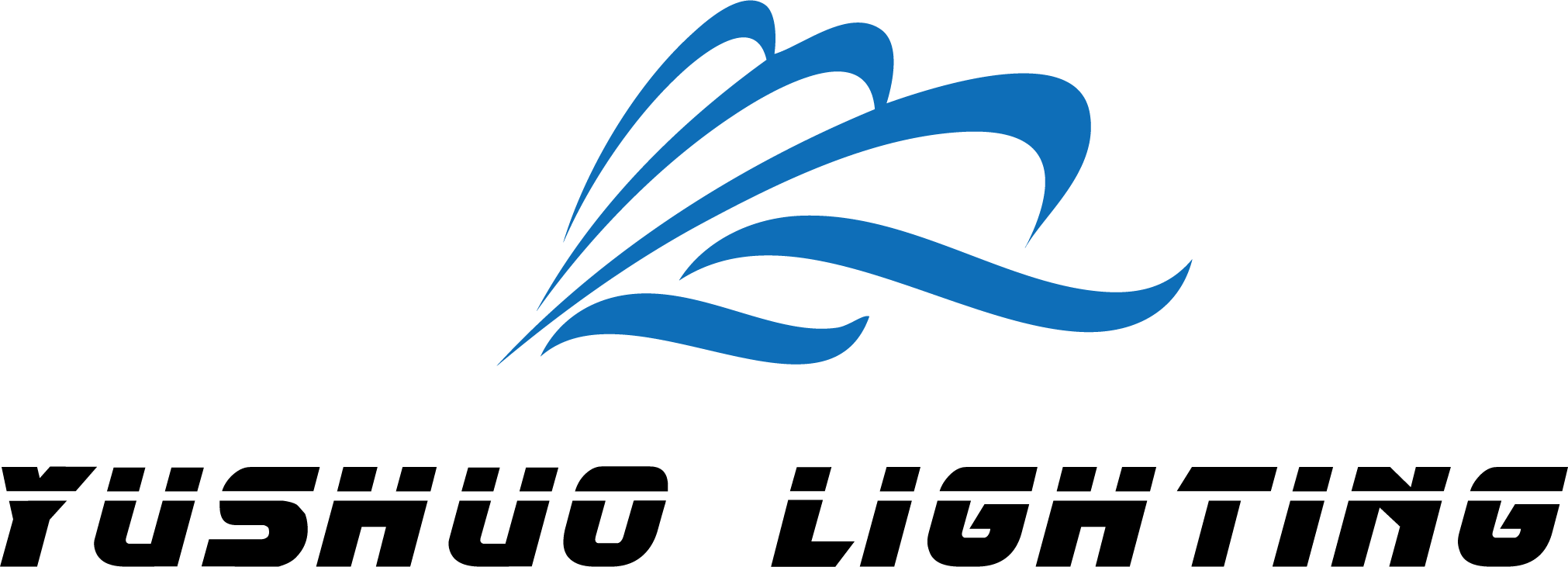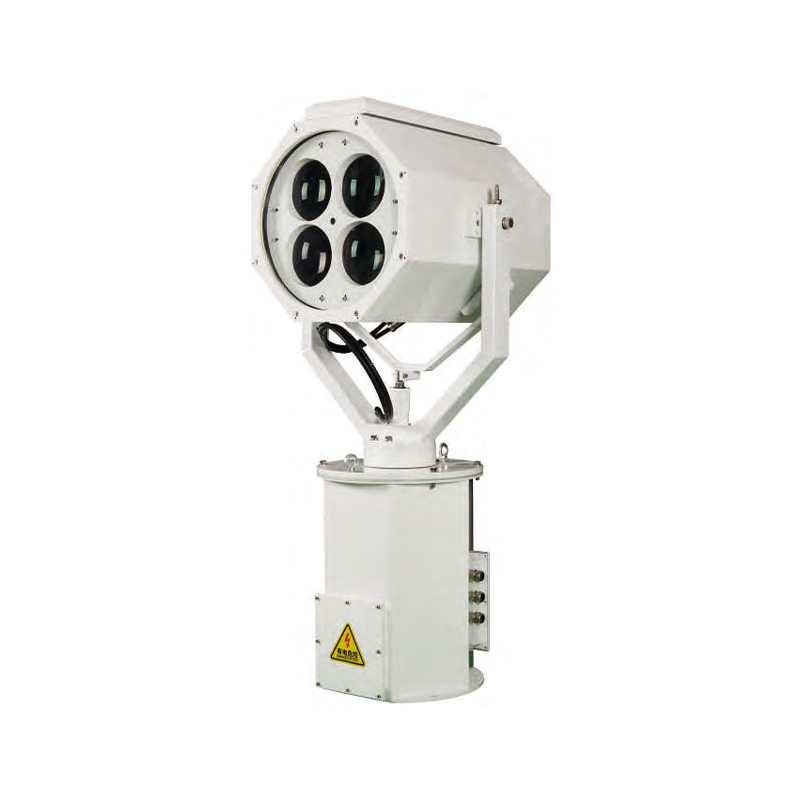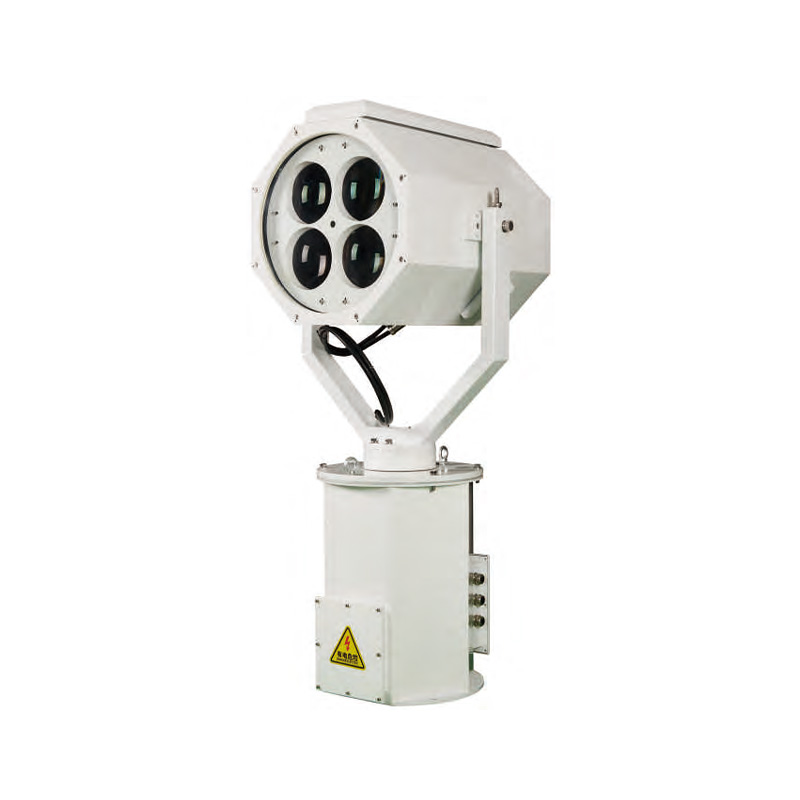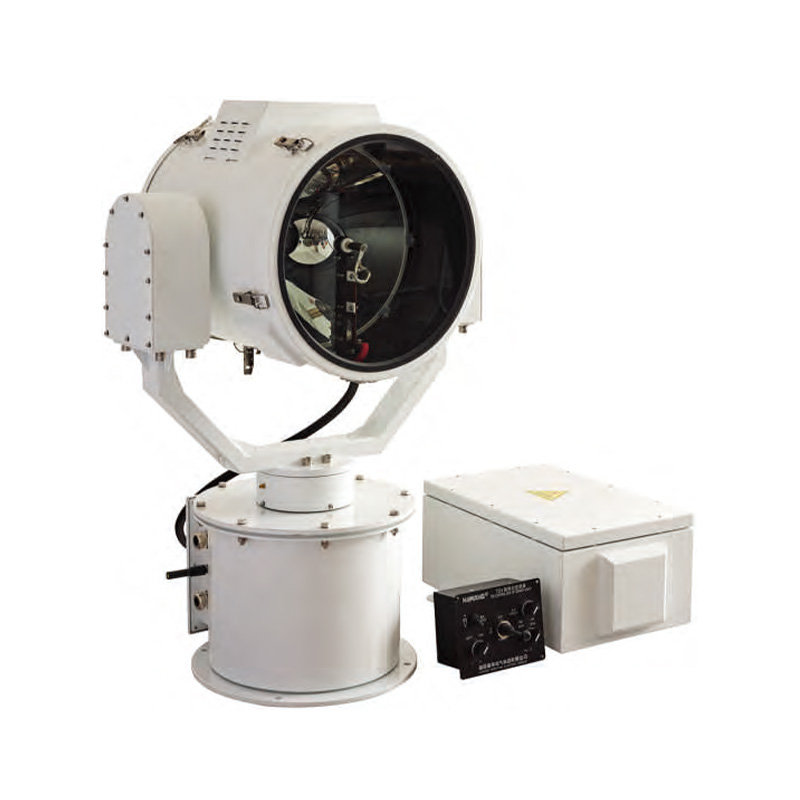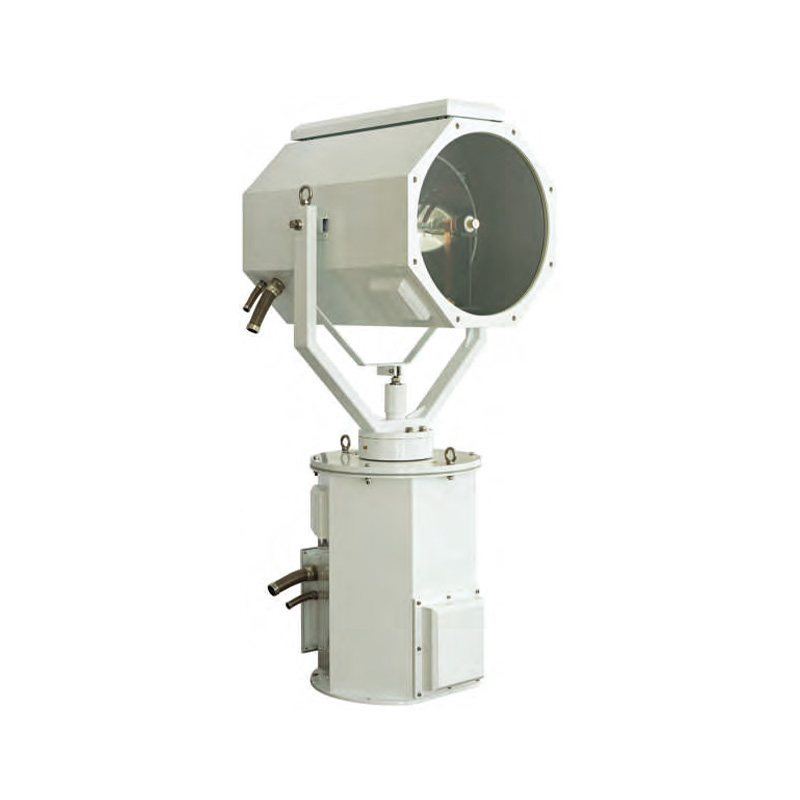HID vs. LED Marine Searchlights: Choosing the Right Type for Specific Applications
The improvement of visibility during the nighttime, inclement weather, or during search and rescue operations is of the utmost importance within the realm of maritime operations. As such, marine searchlights have been developed to fit this need, and the technology used in them has evolved over time. There are two major dominant light technologies, including High-intensity Discharge (HID) and Light Emitting Diode (LED) systems in use today. Each offers powerful light sources, but each has its own advantages and restrictions. In this article, we will discuss the major technological variances of LED and HID marine searchlights. This will allow you to better judge the applications and marine technologies best suited to your needs.
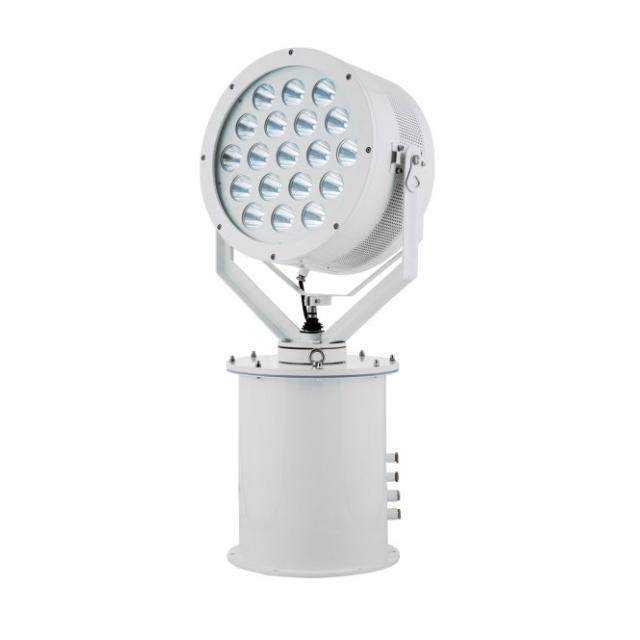
Table of Contents
Understanding HID Marine Searchlights
HID marine searchlights utilize a gas-discharge lamp. Inside the bulb, a high-voltage electrical arc passes through gas or vapor, often a metal halide or mercury vapor. Depending on the lamp’s wattage and design, the arc produces a high-intensity light that can reach several kilometers. These lights need a ballast to stabilize the current and voltage to enable steady operation. The resulting brightness of the light is great and can be used to light objects at considerable distances.

Advantages
- High Brightness and Range: The high brightness of the light is one of the main benefits of the HID searchlights, and this provides great coverage even at long distances. Hence, this can be used in applications where powerful beam is needed, for example spotting objects, guiding ships through the fog or lights for search and rescue operations on land.
- Powerful, Focused Beam: HID search lights are famous for their high quality focused beam. These searchlights can be used to visibility of objects and areas that are at a considerable distance, something that is not possible with a standard lighting.
- Proven Technology: HID technology has been widely used for many years and is considered a reliable solution for high-powered lighting. Its long-established use in marine environments has proven that HID lamps can withstand harsh conditions when properly maintained.
- Variety of Lamp Wattages: HID lamps have lamps in the wattage ranges of 250W – 2000W +, and therefore gives the user the opportunity to purchase a s/h searchlight that best meets the criteria of their vessel or operation. The searchlight will reach its maximum wattage.
- Effective in Low-Light Conditions: HID searchlights are highly recommended for circumstances that promote low-visibility, are foggy, rainy, or snowy, where high-powered lighting can effectively cut through the atmosphere to maintain visibility in order to take fogged-in maritime navigation.
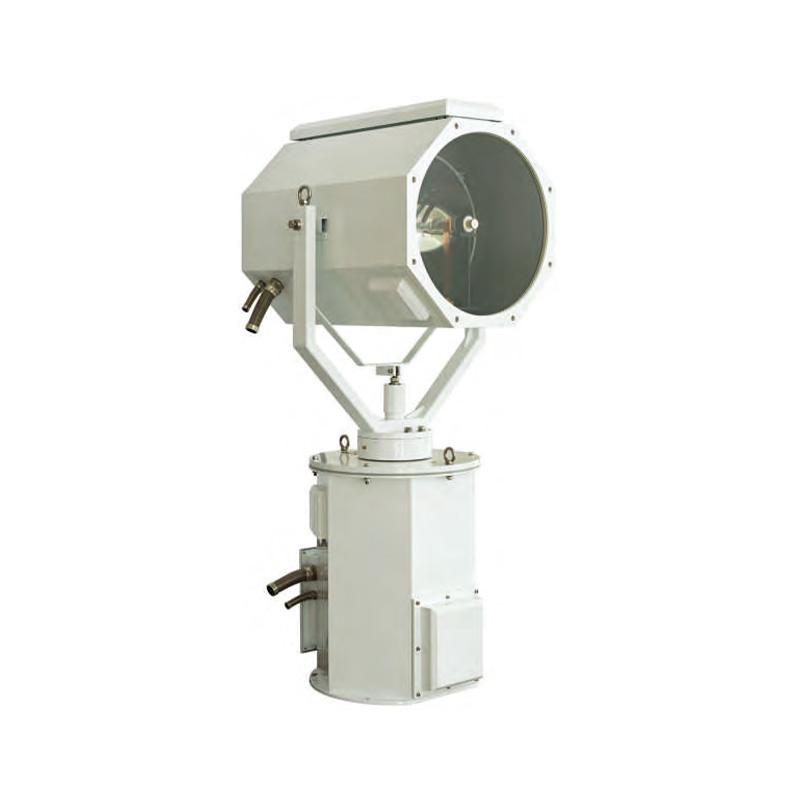
Limitations
- High Power Consumption: HID searchlights consume a considerable amount of electricity, especially at higher wattages. They require a high-voltage ballast to regulate the current and voltage, which contributes to their energy-intensive nature. This can result in higher fuel consumption on vessels, particularly during long periods of use.
- Shorter Lifespan: Compared to more modern lighting technologies like LEDs, HID lamps typically have a shorter lifespan—generally between 2,000 and 5,000 hours. Over time, the brightness of the lamp may degrade, requiring more frequent replacement.
- Heat Generation: HID lamps can generate significant heat during operation. This heat can pose safety risks if not properly managed, and it also means the lamps need adequate cooling to prevent overheating, which can increase the complexity of the system.
- Fragility: Gas arc discharge is considerably weaker than solid-state technologies, such as LEDs, making HIDs more vulnerable to breaking or malfunctioning in a marine environment that is constantly moving, as it would produce more shocks and vibrations.
- Long Warm-Up Time: After being switched on, these lamps will need a warm-up period of a few minutes before they produce full brightness, making it unfavourable for immediate or sudden visibility tasks, such as during a rescue operation.
- Size and Weight: Due to the ballast and additional components, HID search lights are larger and heavier than LED systems, which can increase installation difficulties and structural support requirements on a vessel.
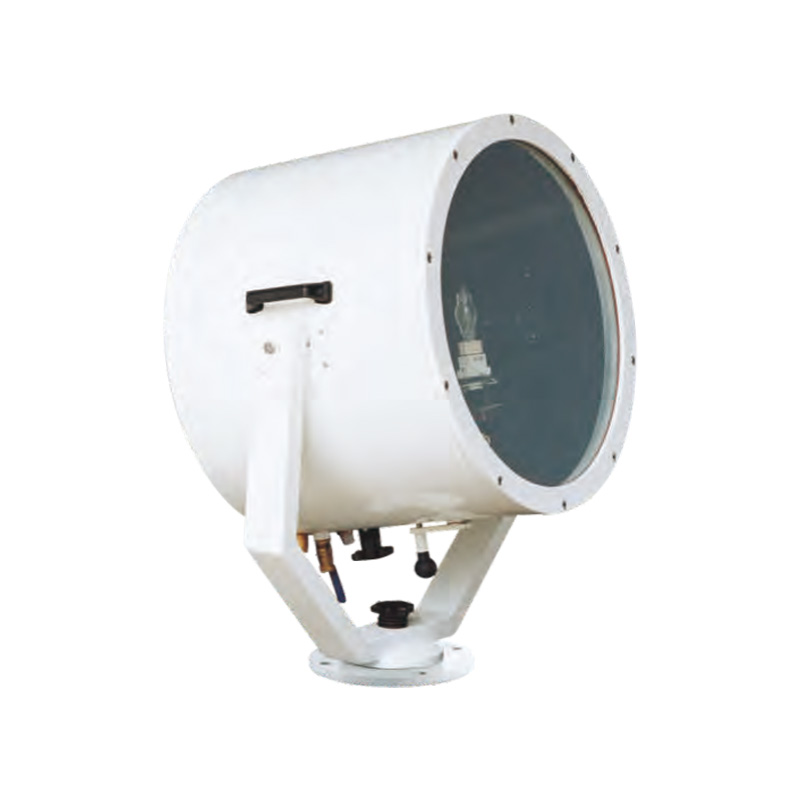
Understanding LED Marine Searchlights
LED marine searchlights are made to aim light into a strong beam and usually contain multiple LEDs in an array. Contemporary LED searchlights utilize high-powered LEDs and can generate an impressive brightness level, on par with, or even exceeding, conventional HID lamps, as opposed to HID searchlights however, LEDs do not need a ballast and do not have warm-up times. Instead, they are low-voltage powered DC circuts and can be more precisely controlled to allow for dimming or adjusting of the beam. Due to the continued advancement of LED technology, marine searchlights are efficient and perform well under the difficult conditions expected of marine equipment.
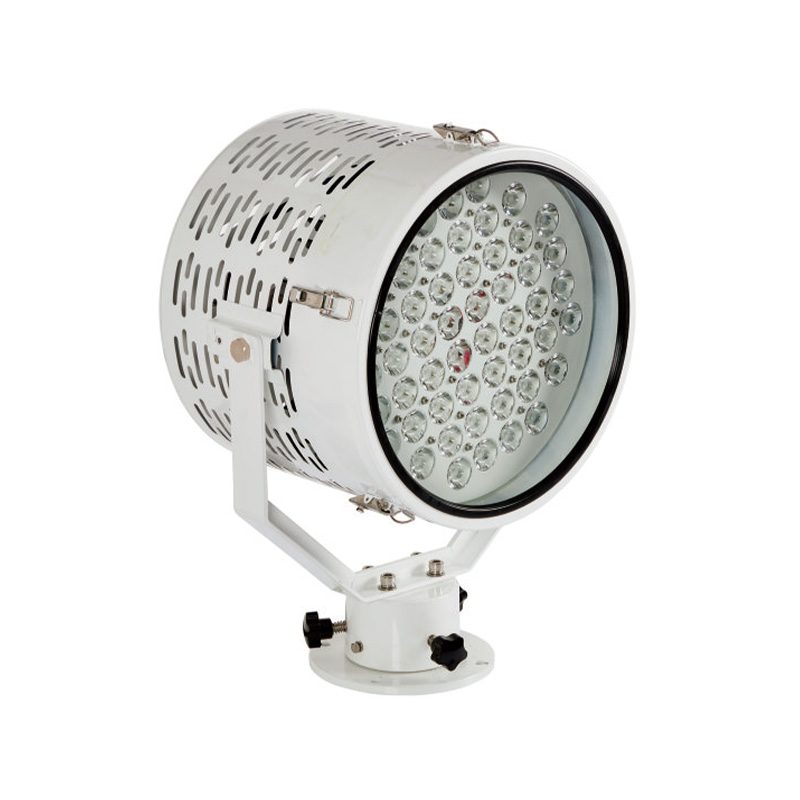
Advantages
- Low Power Consumption: One of the important advantages of LED searchlights is greater efficiency. Compared to HID lamps, LEDs use a tiny fraction of the power to achieve the same brightness. This means lower fuel consumption and operational savings for the vessel, making LED marine searchlights more cost efficient in the long term.
- Long Lifespan: LEDs are exponentially more durable and sustain operational life for a longer duration than nearly any other type of lighting, with a life expectancy of up to 50,000 hours and sometimes longer. In contrast, HID lamps only burn for 2,000 to 5,000 hours. The longer life cycle of LED searchlights results in far less frequent replacements, ultimately leading to less maintenance and reduced downtime.
- No Warm-Up Time: LED searchlights are not like HID searchlights that take numerous minutes to warm up. LED searchlights instantaneously reach full brightness. This feature is extremely important for situations where lighting is needed immediately, like for emergency and rescue situations.
- Durability and Ruggedness: LED searchlights are also solid state devices with no fragile filament and no gas chamber. For that reason, they are resistant to shock and vibration while outperforming extreme temperature fluctuations. This makes them ideal for the rugged settings, including the harsh conditions of marine environments. Particularly, LED searchlights are well suited for boats are constantly moving in rough seas and offshore operational situations.
- Compact and Lightweight: As a result of the compactness of LED technology, LED searchlights are smaller and lighter than their HID counterparts. Therefore, they are much easier to handle and install, particularly in smaller vessels and equipment where stowage is limited.
- Reduced Heat Output: LED searchlights give off significantly less heat than HID lamps. This minimizes the chances of overheating and improves the safety and efficiency of the system as a whole. This also means searchlights will affect heat-sensitive equipment more lightly.
- Environmental Friendliness: LEDs are free from toxic materials such as mercury, which is present in HID lamps. They are also 100% recyclable, making them a more environmentally friendly lighting option. The lower energy consumption and longer lifespan further reduce their environmental impact.
- Advanced Control Features: Many LED marine searchlights have more capabilities compared to HID searchlights because they are more adaptable and have features like dimming, focusing, and alignment which help the user to quickly configure the searchlight to best suit the conditions and tasks.
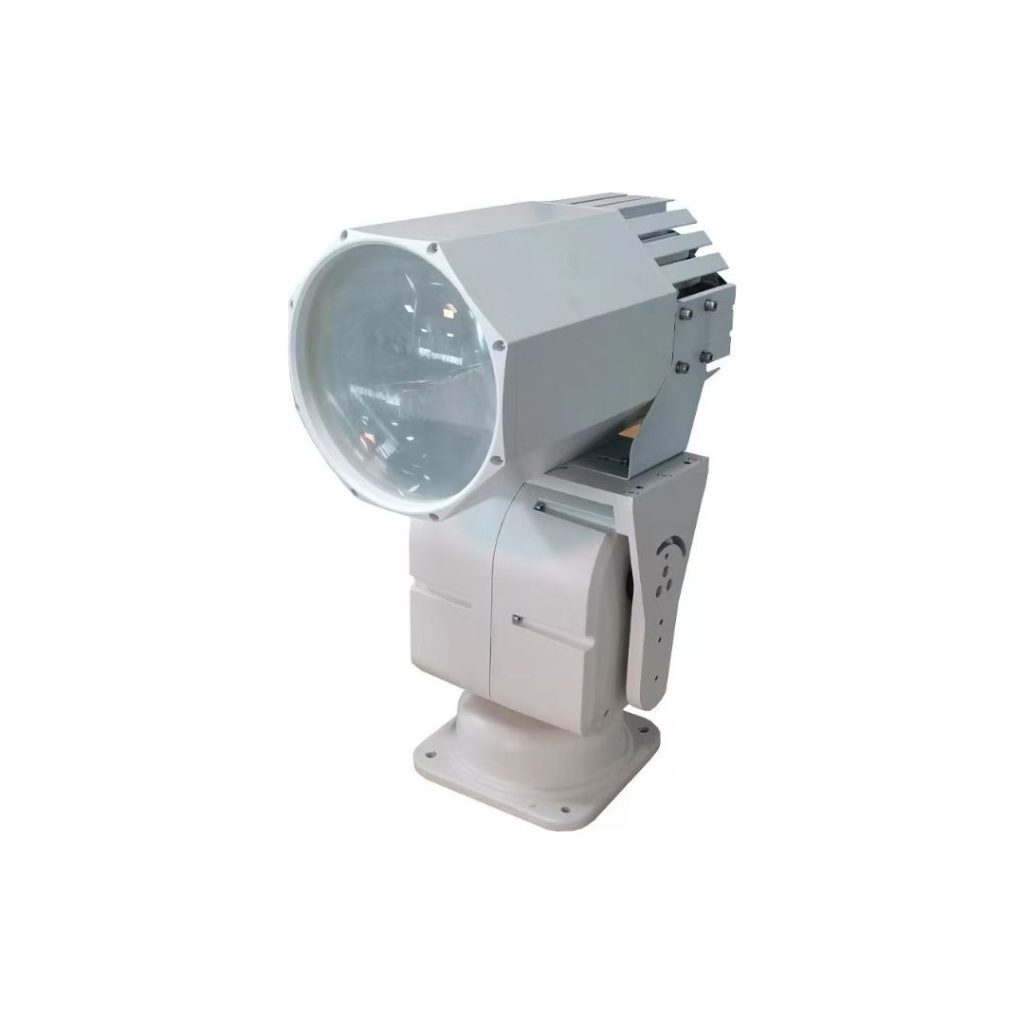
Limitations
- Higher Upfront Cost: While the long-term cost of LED technology is more affordable than HID, LED marine searchlights tend to be more expensive to purchase than their HID counterparts. This is a valid point for customers who have tight budgets, but this is generally not a major concern because of the lower operational and maintenance costs of LED technology.
- Brightness Limits at Very Long Distances: While modern LEDs are extremely bright, they are still not able to put out as intense of a beam over large distances (several Km) as HID searchlights. Purely from an output of light standpoint (very few applications), search and rescue operations at ultra-long ranges might benefit from HID searchlights.
- Dependence on Power Supply: low-voltage systems (DC) LED searchlights are generally powered from low-voltage systems which need a stable and reliable power source. In marine applications, this means that LED searchlights might not be able to be fully utilized on vessels with limited or unstable power supplies.
- Potential for Overheating in High-Power Systems: While LED systems generate less heat than HID lights, higher-powered LED systems still need to have good heat removal. If not, excessive heat will accumulate and will result in degrading the light output and performance of the systems and could result in the LEDs dying off (rendering the systems useless). Searchlights should be equipped with sufficiently good heat removal systems such as heat sinks and/or fans.
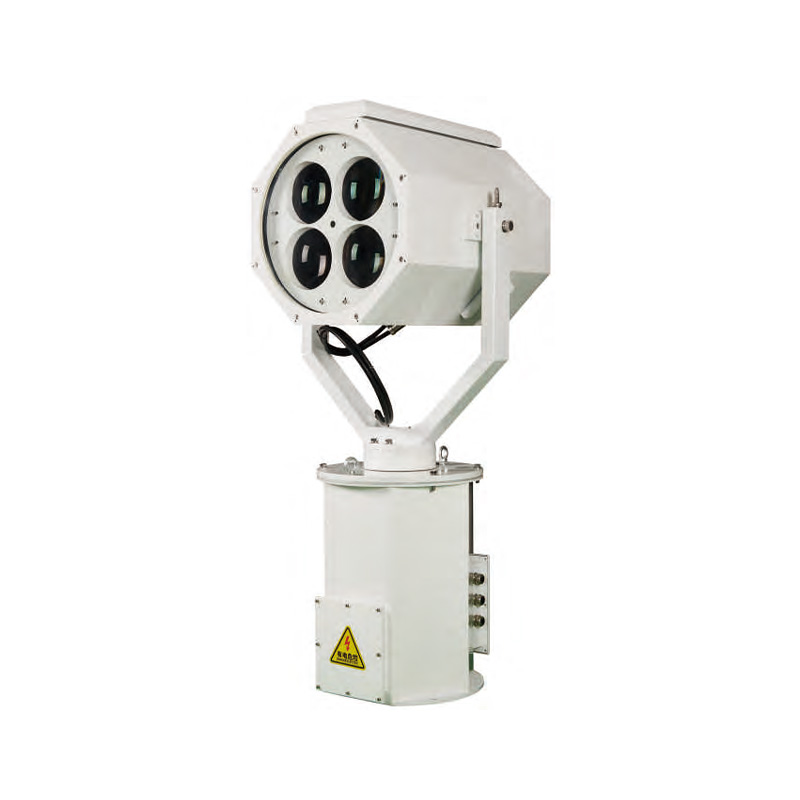
Key Differences Between HID and LED Marine Searchlights
| Feature | HID Marine Searchlights | LED Marine Searchlights |
| Light Output | High brightness, strong beam for long-distance illumination. | High brightness, but generally not as intense at extreme distances. |
| Energy Consumption | High power consumption due to the need for ballasts and high voltage. | Low power consumption, more energy-efficient than HID. |
| Lifespan | 2,000–5,000 hours of operation. | 50,000+ hours of operation. |
| Warm-Up Time | Requires several minutes to reach full brightness. | Instant full brightness with no warm-up time. |
| Durability | Sensitive to vibrations and shocks; fragile. | Durable and resistant to shocks, vibrations, and extreme temperatures. |
| Heat Generation | High heat output due to high energy use. | Low heat output, more efficient heat dissipation. |
| Size and Weight | Larger and heavier due to ballast and lamp components. | Compact and lightweight, no need for ballast. |
| Environmental Impact | Contains mercury; not easily recyclable. | No toxic materials (e.g., mercury) and fully recyclable. |
| Initial Cost | Generally less expensive to purchase initially. | Higher initial cost but cost-effective in the long run. |
| Maintenance | Requires more frequent maintenance and replacement of bulbs. | Low maintenance due to longer lifespan and fewer component failures. |
| Performance in Cold | Performance may degrade in extreme cold. | Excellent performance in both cold and hot conditions. |
| Beam Control | Limited beam adjustments; usually manual or motorized controls. | Advanced control features such as adjustable beam angles, dimming, and zoom. |
| Common Applications | Search and rescue, long-range visibility, military operations. | Search and rescue, navigation, port operations, recreational vessels, research. |

Key Factors to Consider for Choosing Between HID and LED Marine Searchlights
The different advantages and constraints of HID and LED searchlights make choosing the right one highly individualized depending on the marine vessel’s particular operational situation and needs.
1. Light Output and Brightness Requirements
One of the first aspects to evaluate when deciding on a searchlight is the level of brightness necessary for the tasks. HID searchlights have a reputation for their very high lumen output and for being able to produce a highly bright and intense beam that is able to reach exceptionally far. As a result, their use is recommended whenever long-range visibility and illumination are required, such as search and rescue overseas. HID searchlights are excellent in situations where the user needs to illuminate and identify the features of an object or obstacle that is located several kilometers away, and when the search area is large and low levels of natural light are present.
Although historically HID searchlights have had the greatest power of illumination, LED searchlights have made great developments in brightness in recent years. While the raw brightness of LED lights is still dwarfed by HIDs at the longest ranges, they still perform adequately, with the ability to produce a bright and focused beam suitable for the majority of maritime applications. The customizable nature of LED technology is unparalleled, with modern systems featuring variable and programmable beam focus, dimming, and zoom; a versatile applications of the technology can be easily tailored to. This makes LEDs suitable for the majority of average standard marine lighting operations where extreme brightness is not a major requirement.
2. Energy Efficiency and Operating Costs
The bright and excessive energy consumption of HID lights must be addressed when discussing energy efficiency. One of the major downsides of HID lighting systems is the large amount of power they draw and the high-voltage ballasts used. This creates a scenario where the operational expenses increase. For vessels employing HID searchlights frequently or for long durations, the fuel expenses will inevitably accumulate. Furthermore, the extra heat output of HID systems can compromise their efficiency by necessitating additional cooling systems.
There is a strong proficiency of LED lighting for some of the most requested energy efficiencies. LED searchlights are capable of significant energy preservation for long usage over time as they consume less energy than HIDs for the same amount of brightness output. This is compelling for vessels on voyages for long periods of time as most have cooling systems that can relieve the heat inefficiencies of HIDs lighting, thus creating an overall positive energy usage. More so, since HID heat systems are less hot, they have less strain on a vessel’s cooling systems, making their energy usage worse than a pure LED searchlight.

3. Lifespan and Maintenance Requirements
Contrast to HID searchlights, there is less change for maintenance of the LED systems significantly in isolation. LEDs are designed to last over 50,000 hours which strongly reduces the amount of replacements that will be required over time. This is a positive long payback of time that is late for the surrounding of the illumination systems to be frequently present in a marine environment. In addition, for shock and vibration resistance comfort, these LEDs systems are designed as shock summed solid states, making these HID systems almost obsolete for the LEDs resilience.
In comparison, HID searchlights only last between 2,000 and 5,000 hours and are also more prone to breakage because the components are so delicate. Additionally, the bulbs need to be replaced, and the ballasts are also prone to failure so regular maintenance is required. With regards to vessels that operate in constantly vibrating and moving environments, HID searchlights are also more prone to component failure at a faster pace, resulting in having to spend more money and down time for maintenance.
4. Durability and Resilience in Marine Conditions
There is a need for durability for all equipment that is used in a marine environment. While HID search lights are more powerful in terms of brightness, they are also more delicate and therefore more likely to be damaged in shocks and vibrations. Considering the conditions at sea, HID lights are likely to be damaged with constant movement without proper heat management, due to the fact that they produce a lot of heat that can lead to reduced efficiency and lifespan of the searchlight.
On the other hand, marine LED searchlights are made with the intention of being more rugged and more capable of withstanding the conditions described. Because of the solid state technology, LEDs are more resistant to vibrations and shocks. Also, there are no fragile pieces to break like the HID bulbs contain, which helps in an environment like the maritimes with constant movement and harsh conditions. Also, the lower heat output from the LEDs is beneficial in terms of operational safety, since the risk of overheating is reduced. Because of the lower heat output and increased durability of LED searchlights, they require less maintenance and have longer service lives, which is more advantageous for searchlights on vessels operating on more challenging conditions.

5. Beam Control and Customization
The ability to control the beam is critical for some marine operations. HID search lights offer manual or motorized control of the direction of the beam. These adjustments, however, are not as flexible or sophisticated as the beam control options that come with LED, which are more advanced. Once the focus of the beam on HID searchlights is fixed, it is usually also set, which can really limit the versatility of the beam.
The adjustability of beam angle is an advanced common feature in LED searchlights. Numerous LED searchlights possess both zoom features and dimming capabilities, allowing customizable lighting. This is imperative in search and rescue missions, nighttime navigation, and any other scenario, that needs different lighting for various tasks. Advanced beam control enables LED searchlights to be an adaptable option for ships with varied lighting requirements.
6. Environmental Impact and Sustainability
Finally, the lighting technology’s environmental impact deserves attention. Some used hazardous materials, like mercury, present environmental concerns for breakage or improper disposal of the bulbs. Moreover, the increased energy consumption of HID lights results in greater carbon emissions throughout their operating life.
In distinct contrast, LED search lights are environmentally friendly, contain no hazardous materials like mercury, and are completely recyclable. Furthermore, their lower power consumption leads to an even lower carbon footprint. For such organizations and individuals, LED searchlights are greener than traditional HID.
Summary
- If you need a searchlight with maximum brightness and long-range illumination, HID marine searchlights are the optimal option.
- For optimal energy efficiency, low maintenance, durability and advanced beam control, LED marine searchlights are a great option for lower long-term costs and improved performance.
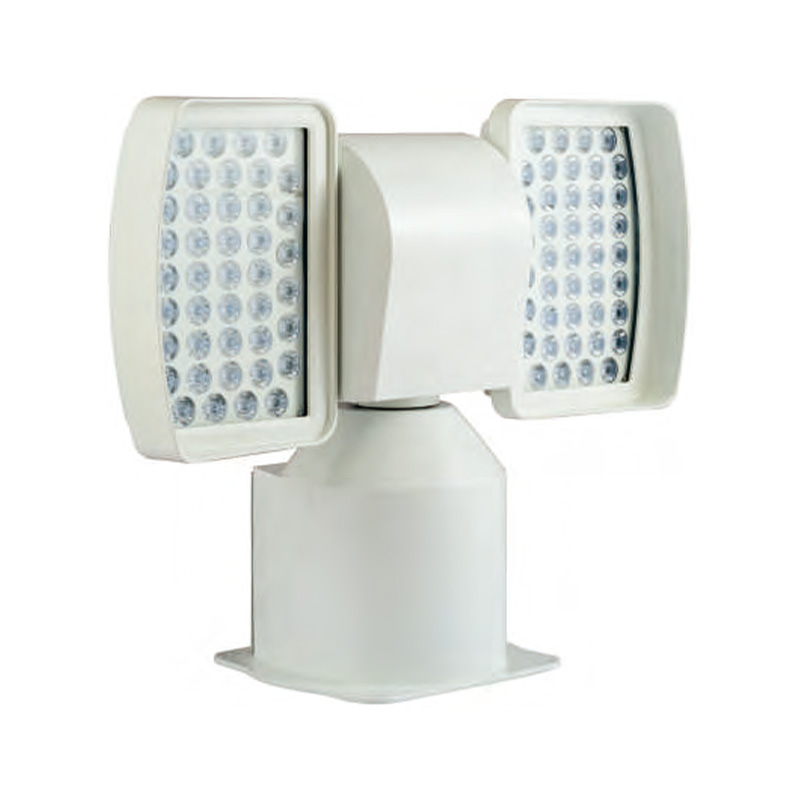
Final Thoughts
with the continued evolution of LED technology in marine lighting industry, LED searchlights seem to be the future of marine searchlights, offering superior performance and sustainability compared to HID searchlights. Whether you have a recreational boat or a commercial vessel, LED search lights are the intelligent, long-term investment for modern marine navigation.
